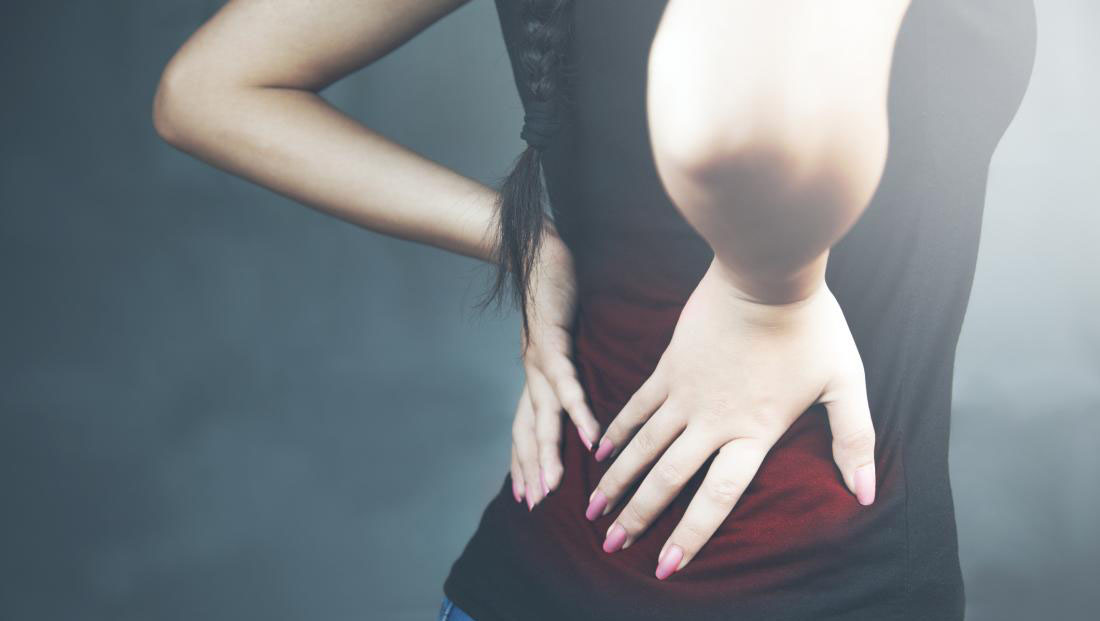
Low back pain is a universal human problem. It is difficult to find a person who hasn’t had a low back pain at some point in time. According to studies about 80% of adults experience low back pain at some point in their lifetimes. Low back (lumbar region) starts below the ribcage. Pain in this region can be severe and is one of the top causes of non-attendance at office which may even lead to job-related disability.
Both men and women can get affected by low back pain. The intensity of the pain can range from a dull constant ache to a sudden sharp sensation that leaves the person crippled. In case of an accident or lifting something heavy, pain can begin abruptly. If the pain is on account of age-related changes of the spine, the onset can be gradual. Sedentary lifestyles can be propitious for the development of the pain. For instance, lack of exercise during the weekdays punctuated by vigorous workouts in the weekends.
Structures that make up the lower back:
Back pain that generally occurs in the lower back includes the five vertebrae (referred to as L1-L5) in the lumbar region, which supports much of the weight of the upper body. The spaces between the vertebrae are maintained by round, rubbery pads called intervertebral discs that act like shock absorbers throughout the spinal column to cushion the bones as the body moves. Bands of tissue known as ligaments hold the vertebrae in place, and tendons attach the muscles to the spinal column. Thirty-one pairs of nerves are rooted to the spinal cord and they control body movements and transmit signals from the body to the brain.
Acute low back pain: If the low back pain is acute, it may last a few days to a few weeks without any serious loss of function. However, acute low back pain is mechanical in nature, implying there is a disruption in the way the components of the back (the spine, muscle, intervertebral discs, and nerves) fit together and move.
Subacute low back pain: Low back pain that lasts between four and twelve weeks is called subacute low back pain.
Chronic low back pain: This type of low back pain lingers for twelve weeks or longer, even after the trauma that triggered the pain or the underlying cause of the acute low back pain has been treated. Around 20% of the people suffering from acute low back pain is at risk of chronic low back pain with persistent symptoms in one year.
The magnitude of the burden from low back pain has assumed greater proportions in the recent years owing to the shift in the lifestyle of people. People who spend long hours before computers are at more risk of developing the condition if they don’t adopt a proper sitting posture. According to medical studies, low back pain is the third disease condition that causes mortality and poor health, with only ischemic heart disease and chronic obstructive pulmonary disease ranking higher.
Common symptoms of low back pain:
Dull aching pain: Pain that remains within the low back is often described as dull and aching rather than burning, stinging, or sharp. This kind of back ache is generally associated with mild or severe muscle spasms, restricted mobility and aches in hips and pelvis.
Pain that radiates to the buttock, legs and feet: Sometimes low back pain can be a sharp, stinging, tingling or numb sensation that shoots down the thighs and into the low legs and feet. It is also referred to as sciatica. Sciatica is caused by irritation of the sciatic nerve, and is usually only felt on one side of the body.
Pain getting worse with sitting: In relation to the underlying cause of the pain, some body positions may relieve pain, whereas some positions may aggravate the pain. For instance, walking normally may be difficult, whereas leaning forward onto something, such as a shopping trolley may lessen the pain. The way symptoms vary with shifting positions can help identify the source of pain.
Pain getting better when moving around: Many people with low back pain notice symptoms that are worse on waking up in the morning. After walking around a bit, these symptoms get relieved. Pain in the morning is on account of long periods of rest, decreased blood flow with sleep.
Treatment for low back pain:
At Plexus we offer a comprehensive treatment program that comprises of medications, nutritional supplements, exercises and life style modifications that help in reducing pain and improving function. After undergoing the treatment for a period of 7 to 10 days, depending on the severity of the problem, our patients experience a great sense of relief in their symptoms.
Physiotherapy is the first-line of treatment for people suffering with low back pain. Being a conservative, non-surgical treatment option, physiotherapy can produce effective long-term relief from all types of low back pain. There is a vast amount of medical literature that supports physiotherapy for the treatment of low back pain.
The goals of the physiotherapy include:
- Decrease back pain
- Increase function
- Teach the patient a maintenance program to prevent future back problems
Passive physiotherapy: Passive physiotherapy focuses on things done to the patient such as heat application, ice packs and electrical stimulation. For e.g. a heating pad may be applied to warm up the muscles before doing exercise and stretching and an ice pack may be used after the exercise to calm the muscles and soft tissues attached to it.
Active physiotherapy: This type of physiotherapy is aimed at specific exercises and stretching. For a variety of low back pain conditions, active physiotherapy is the core part of the overall physiotherapy regimen.
An ongoing physiotherapy program also reduces the chances and intensity of future occurrences of low back pain.
For enquiries related to treatment of Low Back Pain, send a message to plexusnc.com










